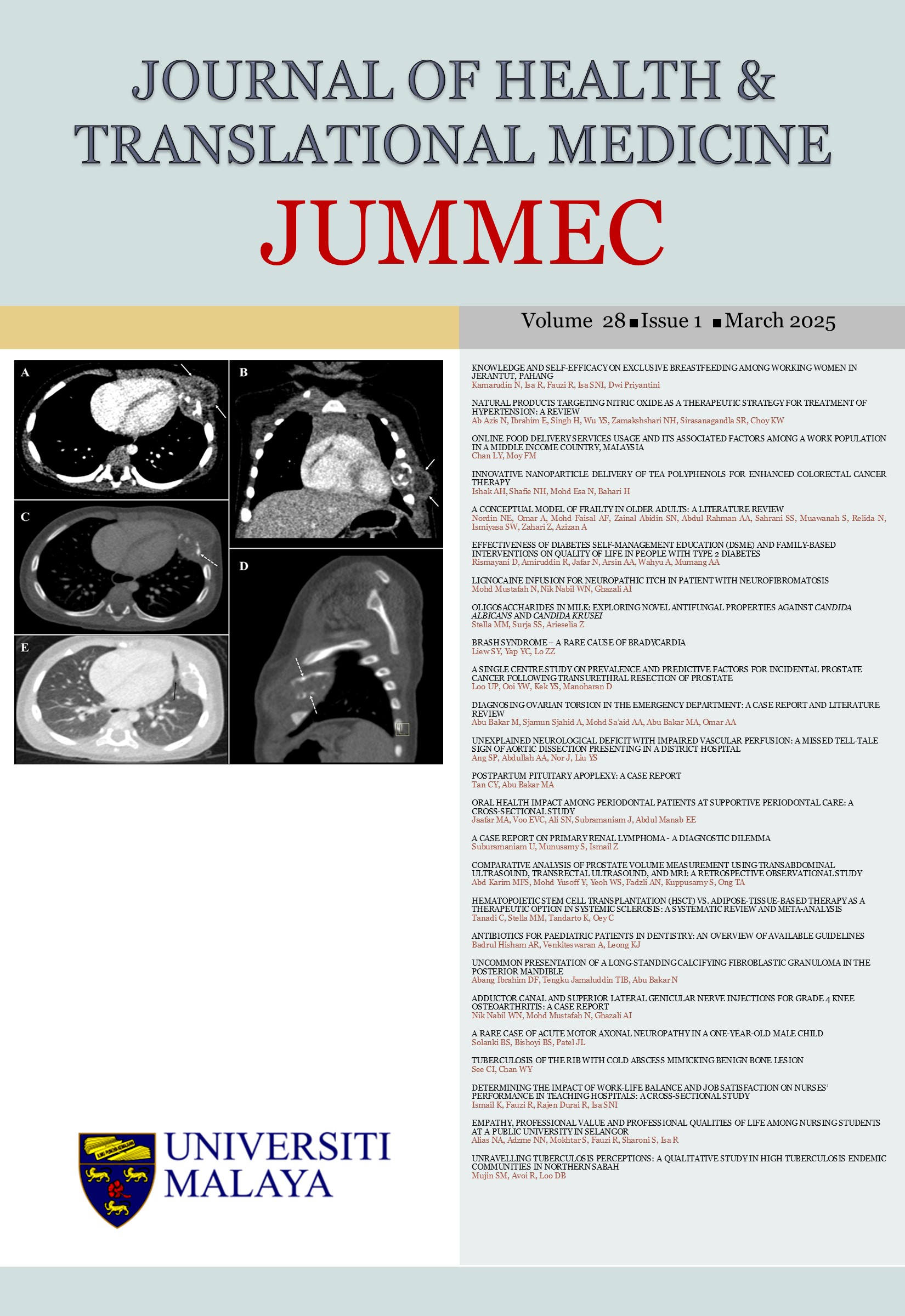OLIGOSACCHARIDES IN MILK: EXPLORING NOVEL ANTIFUNGAL PROPERTIES AGAINST CANDIDA ALBICANS AND CANDIDA KRUSEI
Received 2024-02-04; Accepted 2024-06-19; Published 2025-01-02
DOI:
https://doi.org/10.22452/jummec.vol28no1.8Keywords:
oligosaccharides, synergistic, azole, Candida albicans, Candida kruseiAbstract
With the increasing antifungal resistance and prevalence of candidiasis, the aim of this research is to evaluate the potential inhibitory effects and synergistic activities of oligosaccharides present in milk with azoles in inhibiting the growth of Candida albicans and Candida krusei. The oligosaccharides were derived from breast milk (OH), bovine (OB), goat (OG), and formula milk (OF), then confirmed by thin-layer chromatography (TLC). Disk diffusion and microdilution were used to evaluate the antifungal potency of oligosaccharides using disk diffusion and microdilution. The oligosaccharides only showed antifungal activity in microdilution. The statistical analysis showed moderate variability in minimum inhibitory concentration (MIC) values and higher fractional inhibitory concentration (FIC) values. A significantly wide range of MIC in the microdilution assay indicated the effectiveness of this antifungal agent varied across different samples. In the combination test, antagonistic activity was observed between fluconazole and oligosaccharides against C. albicans ATCC 90028. Further research is needed to study the mechanisms of antifungal activity and synergism between oligosaccharides and azoles against Candida species.
Downloads
Downloads
Published
Issue
Section
License
All authors agree that the article, if editorially accepted for publication, shall be licensed under the Creative Commons Attribution License 4.0 to allow others to freely access, copy and use research provided the author is correctly attributed, unless otherwise stated. All articles are available online without charge or other barriers to access. However, anyone wishing to reproduce large quantities of an article (250+) should inform the publisher. Any opinion expressed in the articles are those of the authors and do not reflect that of the University of Malaya, 50603 Kuala Lumpur, Malaysia.


